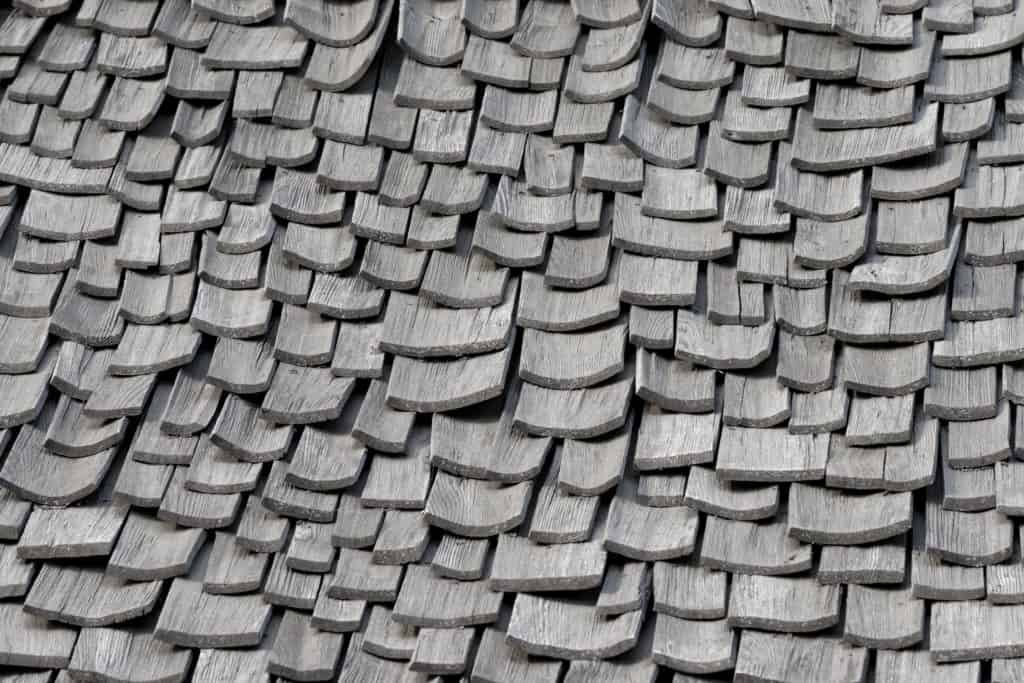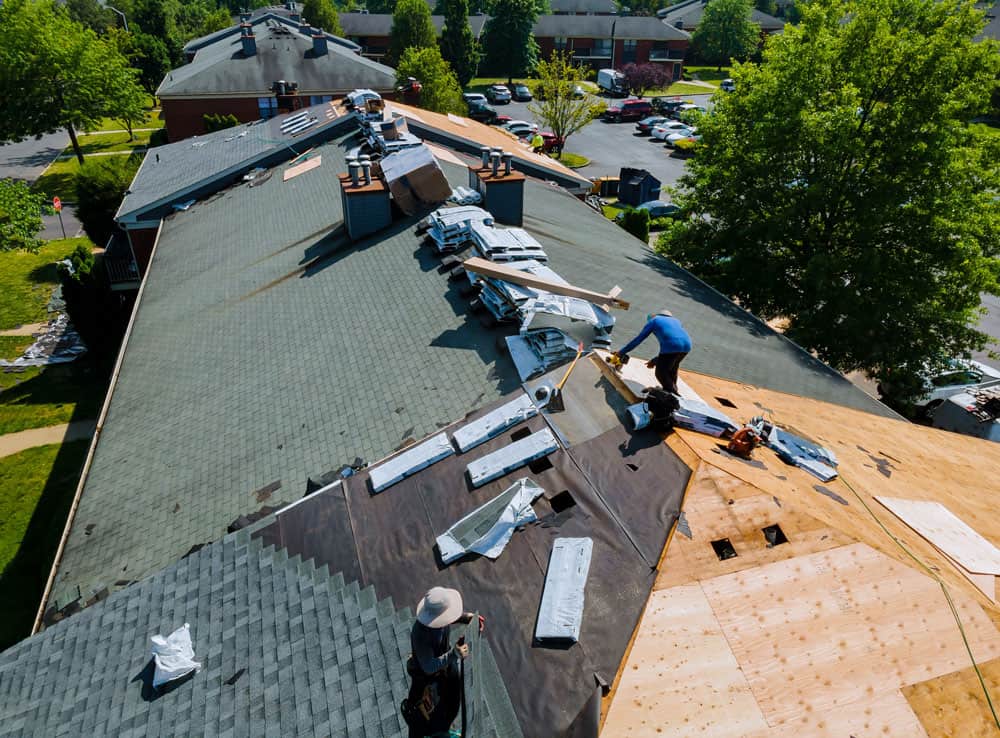Here are some tips to fix damaged roof shingles: Lift the shingles above the damaged one, and slip a flat bar underneath the damaged shingle. This will force the nails to pop up, allowing you to pull them out. Repeat with the next row above the damaged shingle.

Curled or missing shingles
Curled or missing roof shingles can indicate that you should consider replacing your roof. Although there are several reasons why your shingles may curl, replacing them is only sometimes necessary. You can do a few things to avoid the problem before it worsens. Here are some tips to prevent curling.
First, determine if the moisture causes buckling. This is the most common cause. It can accumulate on the roof decking and cause the shingles to buckle. It can also happen because of poorly installed shingles. Another possible cause is poor ventilation in the attic. The humidity and heat from the Florida summer can cause condensation.
Next, you need to determine if the shingles are cracked or missing. A missing or curled shingle could result from wind damage or other problems. Either way, fixing the problem as soon as possible is crucial. Otherwise, it could cause extensive water damage to your house and may even deplete your savings account. A roof inspection is essential if you want to prevent any damage to your home and its contents.
The most basic and affordable repair is replacing damaged shingles with new ones. You can quickly get replacement shingles at most home improvement stores. If your shingles are curled and cracked, you can use a putty knife to flatten them out. If you don’t want to spend money replacing the damaged shingles, you can also try replacing them with a new set.
Another way to prevent damage from worsening is to ensure proper insulation on your roof. Proper insulation will prevent moisture from building up on your roof. Consider repairing the problem in small sections rather than covering it up. Putting a new roof on top of the old one can cause more damage later.

Wind damage
Wind damage to a roof can result from a variety of factors. The damage can be severe enough to cause the shingles to come loose or break. In some cases, the roof will need replacing. When analyzing roof damage, a homeowner should consider the roof’s age, slope, and other factors. Then, they can decide whether to repair or replace the roof shingles.
The first thing to do is assess the damage caused by wind. The damage can vary, but the insurance company may pay more if the damage is extensive. Homeowners should also ensure that their insurance policy covers damage caused by wind. However, it is also essential to be aware that some roofs may be more vulnerable to wind damage than others.
The most common signs of wind damage to a roof include loose corners and curling edges. Even a slight curl or lift can cause a shingle to blow off. Those loose shingles can also cause other shingles to lift off the roof, exposing the roof to the elements.
Wind damage to roof shingles is widespread in homes with asphalt shingles. In addition to cracking, wind damage can lead to loose shingles, sagging, and granulation. While there are ways to repair the problem, a professional roofer will know the exact nature of the damage, such as determining if the shingles have cracks or rips. If you have an asphalt or metal roof, it is essential to have your roof inspected annually to ensure it is in good condition and protects your home from the elements.
When hail or wind damage is suspected, contact a roofing contractor immediately. While hail damage can be easy to spot, wind damage to roof shingles is challenging to detect, especially at a distance. The shingles may have been stretched and damaged, so they may not be easy to spot. The damage may be hidden on the roof, but you should always call a roofing contractor for an inspection to ensure the roof is in good condition.

Algae growth
The presence of algae on your roof can be bothersome. It can make your home look unsightly, and algae can cause health risks. Some algae can cause respiratory illnesses, nausea, and vision problems. If you see algae growth on your roof, removing it quickly and thoroughly is best.
To remove the algae, you must first identify its source. This can be done using a microscope, as green algae are only visible through a microscope. There are two kinds of algae – black and green. The black one is difficult to identify without a microscope. The green one can look green or brown. The same shingle can have black or green algae growth. Fortunately, copper flashing is very effective in eliminating algae growth.
If you notice algae growth on your roof, it is most likely caused by a blue-green type of algae. This type of algae is spread by wind and feeds on dust. It grows on the northern part of your roof and often appears as dark, black spots. The algae produce a dark coating on your roof to protect itself from ultraviolet rays.
Algae growth on damaged roof shingles is widespread, especially in coastal areas. It can cause many problems for your roof and your home. It absorbs more heat than the original shingle, making your home hotter. Furthermore, algae growth will weaken your shingles over time. In addition, algae growth can cause roof streaks.
Although copper doesn’t offer 100% protection, copper is a highly effective algae-killing agent. Copper granules and zinc strips can be added to roof shingles to prevent algae growth. Copper granules also prevent moss.
Wind gusts
Wind damage on a roof can be expensive. High winds can lift and damage shingles, which makes the roof more susceptible to water damage. This damage is more prevalent on older, poorly sealed shingles. The wind can also blow debris under the shingles, accelerating the deterioration of the roofing underlay. This can lead to a large roof replacement. Luckily, there are steps you can take to prevent the damage.
The first step is to assess the damage. If you notice a few loose shingles, you should immediately inspect the roof for any damages. Look for loose nails and missing sealant between shingles. If the shingles are loose, you may need to replace the entire roof.
Another way to determine if wind damage to your roof is to check for broken or missing shingles. Call a professional roofing contractor if you find missing pieces or tears in the shingles. You should also check your roof for bubbles. These are a sign of blown-up material and are not safe.
Besides falling shingles, high winds can also damage your roof’s granules, which are small sandpaper-like particles. When these granules fall off, you can usually find them in the gutters. Wind can also cause shingles on the roof’s edge to curl, leading to rotting wood beneath.
Wind damage can be costly for many homeowners. Even though most modern roofing materials are designed to withstand high winds, strong winds can still cause damage. Depending on the size of the wind, some shingles can be blown off entirely.
Age of shingles
It’s essential to consider the age of the shingles when fixing damaged roof shingles. Asphalt shingles can last between 20 and 30 years. They wear and tear as they age and are more susceptible to cracking and splitting. Luckily, this rarely requires an emergency repair. Knowing what to look for will help you make an educated decision about what to do next. Here are a few of the most common signs that your roof shingles are old.
The first sign of aging shingles is curling or buckling. This is a sign that your roof is nearing the end of its life. You should also pay attention to missing shingles. A missing shingle exposes the area to water, which can spread damage to the rest of the shingles. Storm damage repair professionals can help you determine whether your roof needs repairs. If the roof is still in good condition, you may only need to replace the damaged portion.
When fixing damaged roof shingles, you should always use corrosion-resistant nails. Copper nails tend to crack and damage shingles. Copper nails are not ideal for this job, as they can react with the chemicals used on the shingles. If you must use copper nails, consider a lead-coated copper nail instead.
As your shingles age, they will lose granules. The granules help protect your roof from UV damage and mold. Additionally, they provide color. While you may not notice them in the early years, you can tell that your roof is nearing its end if you notice granules on the roof deck or in the gutter.



